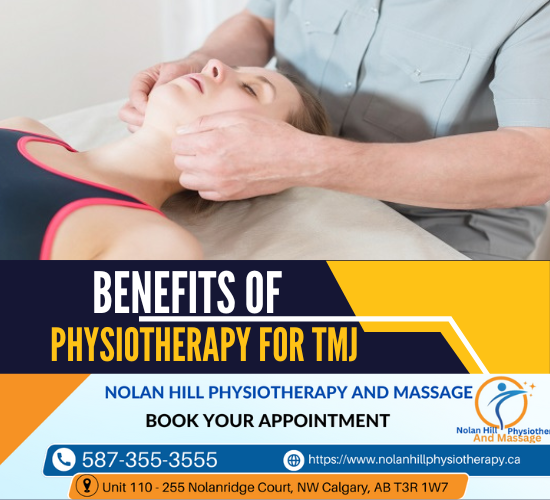Benefits Of Physiotherapy For Tmj: Discussing The Advantages Of Opting For Physiotherapy As A Conservative And Non-Invasive Approach To Treating Tmj Problems.
Are you suffering from jaw pain and other symptoms of TMJ? If so, then physiotherapy may be the answer for you. Physiotherapy offers a conservative and non-invasive approach to treating TMJ problems that is both effective and safe.
It’s no wonder that more and more people are turning to physiotherapy as an alternative to expensive surgeries or medications with side effects. In this article, we’ll discuss the advantages of opting for physiotherapy as a way to manage TMJ problems in order to improve your quality of life.
We’ll cover what physiotherapy is, how it can help with TMJ, what conditions it can treat, and what a typical treatment session involves. We’ll also explore the advantages of treatment as well as any potential drawbacks.
So come along with us on this journey towards understanding how physiotherapy can alleviate your jaw pain and provide you relief from the symptoms associated with TMJ.
What is TMJ Physiotherapy?
You can get relief from your TMJ discomfort with physiotherapy – it’s a safe, non-invasive way to feel better!
Physiotherapy is an evidence-based form of treatment that uses physical methods such as massage, manipulation, and exercises to address musculoskeletal issues. It has been used effectively in the management of Temporomandibular Joint (TMJ) problems for many years.
Physiotherapists use a variety of modalities, including manual therapy techniques, specialized exercises, and postural re-education to help reduce pain and improve movement patterns related to jaw function. Other treatments may also be prescribed depending on the individual’s condition.
By addressing underlying causes rather than just treating symptoms, physiotherapists can provide long-lasting relief from TMJ issues without resorting to surgery or other more invasive options. Through this holistic approach, patients benefit from improved range of motion, reduced pain levels, and improved overall quality of life.
How Does Physiotherapy Help with TMJ?
Physiotherapy is an effective, non-invasive approach to treating TMJ problems. By reducing pain and discomfort, improving range of motion, and strengthening the muscles around the jaw, physiotherapy can help you manage your TMJ symptoms.
You can experience improved function of the jaw joint with regular physiotherapy sessions that focus on specific exercises and stretches tailored to your individual needs.
Reducing Pain and Discomfort:
By receiving physiotherapy, you can quickly reduce the pain and discomfort associated with TMJ. Physiotherapy works by stretching and strengthening the muscles in your jaw, neck, face, and shoulders to improve their function and reduce tension.
Physiotherapists can also provide advice on posture or bio-mechanical issues that may be contributing to TMJ problems. They can advise on relaxation techniques such as deep breathing or visualization exercises. Lastly, they can use modalities such as ultrasound or electrical stimulation to help minimize pain and inflammation.
All these measures combined ensure that patients experience relief from their symptoms without needing invasive treatments such as surgery. The benefits of opting for physiotherapy as a conservative approach are numerous; it’s a safe, non-invasive way to effectively manage TMJ discomfort while helping to prevent further damage or deterioration of the joint.
Improving Range of Motion:
Through targeted exercises and stretches, physiotherapy can help improve the range of motion of the jaw and neck muscles, restoring comfort and mobility. This is key for those suffering from temporomandibular joint (TMJ) problems. With increased range of motion, comes improved ability to complete necessary activities like eating, speaking, brushing teeth, etc., with greater ease.
Physiotherapy can also help reduce muscle tension in the affected areas, which will further increase flexibility. Exercises are tailored specifically to each individual patient’s needs based on their medical history and current symptoms in order to maximize results. Additionally, these exercises can be performed at home or in a professional setting with a trained therapist.
By utilizing physiotherapy as a conservative approach to addressing TMJ issues, patients have an opportunity to experience improved range of motion while avoiding more invasive treatments such as surgery or medications that may come with unwanted side-effects.
Strengthening Muscles
You won’t believe the amazing results you can get by strengthening your neck and jaw muscles with physiotherapy!
Strengthening these muscles helps to improve overall range of motion, reduce pain, and promote healing.
Physiotherapy enables a patient to do exercises tailored for their specific needs in order to build strength and prevent further injury.
It’s also an excellent way to improve posture, balance, and coordination.
Furthermore, it helps restore function in the temporomandibular joint (TMJ) area while avoiding surgery or drugs.
Physiotherapy is a safe, effective, non-invasive treatment that can help patients take control of their condition and achieve lasting results.
## What Conditions Can Physiotherapy Treat?
Do you suffer from chronic pain or discomfort in the jaw area? Physiotherapy can help treat a variety of conditions related to TMJ, including headaches, neck aches, and stiffness. It is a conservative and non-invasive approach that can offer many benefits. Physiotherapy can reduce inflammation, improve range of motion, restore muscle balance and strength, and provide relief from pain.
In addition to treating the symptoms of TMJ disorder, physiotherapy also helps prevent it. It corrects postural imbalances that may lead to further difficulties in the future. Physiotherapists use exercises and manual therapy techniques to improve joint mobility and function while reducing stress on sensitive structures. By taking advantage of these treatments, you can get back on track with your life quickly and effectively!
What Does Physiotherapy for TMJ Involve?
Physiotherapy for TMJ typically involves a combination of exercises, manual therapy techniques, and lifestyle changes that can help reduce symptoms in as little as two weeks. Up to 80% of patients see long-term relief with this non-invasive approach. Physiotherapists use methods such as massage, stretching, strengthening exercises, ultrasound, and electrical stimulation to improve the flexibility of joints and muscles around the jaw area.
Regular treatment sessions can help people with TMJ gain better control over their daily activities. Physiotherapy may also involve education about posture correction or ergonomic modifications to decrease stress on the jaw joint during everyday tasks. Ultimately, physiotherapy is an incredibly effective tool in helping individuals cope with TMJ issues safely and without surgery or medication.
Advantages of Physiotherapy for TMJ:
When considering treatment options for temporomandibular joint (TMJ) issues, physiotherapy offers a non-invasive, minimally invasive, and cost-effective approach. It’s an often overlooked but potentially beneficial solution that can help reduce pain and improve the function of the jaw.
Physiotherapy can provide relief from TMJ problems without resorting to more drastic measures such as surgery or pharmaceuticals.
Non-Invasive:
Opting for physiotherapy is a non-invasive approach to treating your TMJ problems, so you won’t have to worry about any surgical intervention. This means that the treatments are gentle and do not require surgery or medication.
Physiotherapy offers an effective and safe way of managing TMJ issues without the risks associated with alternative treatments. It can be used as a standalone therapy or in combination with other conservative therapies, such as splints or oral exercises.
The non-invasive nature of physiotherapy also diminishes the chances of long-term side effects occurring from the treatment. Additionally, it eliminates potential complications from invasive procedures and medications, making it a safer option for those who suffer from TMJ disorders.
By opting for physiotherapy as a treatment option, you will be able to reduce pain, improve mobility in your jaw joints and muscles, and take control over your condition without having to resort to more drastic measures.
Minimally Invasive
If you’re looking for a treatment option with minimal risk and discomfort, minimally invasive techniques may be the way to go. Physiotherapy for TMJ can provide some relief from pain and discomfort without the need for surgery.
Different types of minimally invasive treatments are available depending on the severity of the TMJ problem. For instance, a patient may opt for ultrasound therapy or electrical stimulation therapy. Both of these options have proven effective in reducing inflammation and providing relief from pain and stiffness associated with TMJ issues.
Additionally, manual manipulation techniques, such as joint mobilization, can help improve range of motion while also supporting healthy muscle function around the affected joints.
All of these treatments are minimally invasive and offer an excellent alternative to more aggressive interventions like surgery or injections. With regular physiotherapy sessions tailored to individual needs, many patients find great success in managing their TMJ issues without resorting to drastic measures.
Cost-Effective:
Receiving cost-effective treatments for TMJ problems can be an absolute godsend, especially with the outrageous prices of surgical procedures. Physiotherapy is one such approach to treating TMJ issues, as it’s usually much less expensive than other interventions and doesn’t involve surgery. This makes it a great option for those who want to avoid invasive or costly measures while still getting relief from their symptoms.
Additionally, physiotherapy sessions are covered by many insurance providers, making the costs even more appealing. As such, opting for physiotherapy can be a great way to save money while also receiving effective treatment that doesn’t require going under the knife.
Disadvantages of Physiotherapy for TMJ:
Although physiotherapy is typically a non-invasive treatment, you could still experience some potential drawbacks with this approach to treating TMJ. While it can be an effective and cost-efficient solution for many, the success of physiotherapy in addressing TMJ issues may vary from person to person.
Furthermore, if physical therapy alone doesn’t help alleviate symptoms sufficiently, surgery might be required at a later stage. Treatment may also take a long time to produce results and require frequent visits to the therapist, which could become costly down the line.
Moreover, depending on your medical condition and insurance coverage, you might have difficulty getting reimbursement for the therapy sessions. Ultimately, while physiotherapy can offer various advantages in treating TMJ, it’s important to consider its potential disadvantages before deciding on this option.

